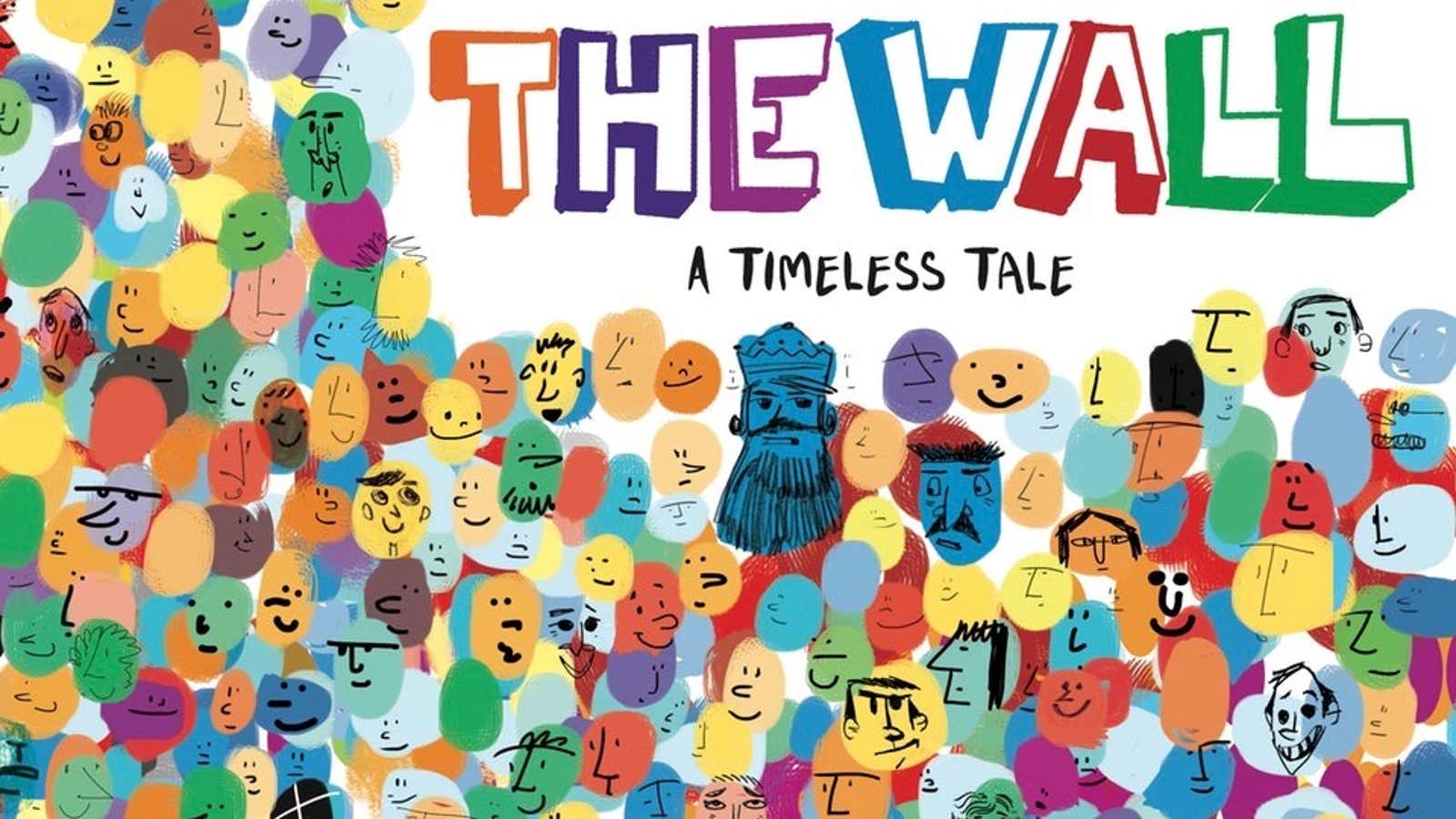Most adults would probably prefer to let children be innocents for as long as possible rather than broach difficult topics, like borders, walls, and the ruling of kingdoms and countries.
But kids hear things. They get suspicious about grownups whispering. They catch fragments of conversations and news reports and are curious. Sheltering them forever isn’t really an option. Nor is blasting them with all the harsh facts of reality. So what’s an adult to do when difficult topics, like for example the US-Mexico border wall, dominate the news, kids are confused, and maintaining total blissful innocence is no longer possible?
A new book offers answers. The Wall: A Timeless Tale, by Giancarlo Macri and Carolina Zotti, with illustrations by Mauro Sacco and Elisa Vallarino, was originally published in Italy in 2018 and will be released on July 9 in the US by Happy Fox Books. It’s a bright, humorous, and lively book with a sweet and very simple style designed to facilitate conversation about complex issues, educate, and entertain without causing kids or grownups too much pain.
The Wall tells the story of a king who has not left his castle for a long time. When he finally emerges and surveys his land, he finds it’s full of all different kinds of people, and he urges an aid to build a wall to keep out anyone who looks unlike him (he is blue and others are a slew of different colors). The aid (who is also blue), is skeptical of this plan, and asks, “Sir, are you sure?”
But the monarch says he is, so his assistant follows instructions, driving out everyone who doesn’t look like them and constructing a barrier. The king’s wall manifests in the book as a thick cardboard pop-up barrier emerging from the text’s spine. It’s tactile, tough, and can withstand the grabby hands of even the most engaged child readers while clearly demonstrating the effects of separation. Page by page, the kingdom grows less colorful and rich, the space on the pages surrounding the king more blank.
The monarch is pleased with his wall, ever so briefly. But soon he demands that a beautiful garden be placed alongside the barrier so he can enjoy walks in his blue kingdom. “Sir, the gardeners have already left,” his aid explains. The king demands they be brought back. He also wants fountains, a road, and sculptures alongside the wall, but all the engineers, artists, and fountain builders are gone and must be returned to do the work.
When all the king’s wishes have been fulfilled, he is still unsatisfied. The kingdom is crowded and colorful again and the book’s pages are filled with different faces, but the wall now appears to the leader an unnecessary barrier because all the people inside and outside seem so talented and attractive. So he calls for its destruction, blaming his assistant for ever building it. When the wall is down again, he happily tells his aid, “This is much better. I’m glad I thought of getting rid of that wall!”
Eventually, of course, kids will still discover that in real life not all endings are happy. However, this amusing and delightful tale, with its charming illustrations and design, paints the king as foolish but teachable rather than vicious and hateful and helps introduce children to the complexities of this existence without sacrificing their innocence.
